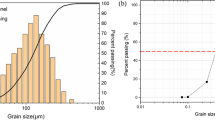Abstract
The biological properties, structural characterization, and performance of Klebsiella variicola GN02 isolated from the roots of P. sinense and embedded in sodium alginate supplemented with 10% sterile skim milk were investigated. The results showed that the immobilized K. variicola GN02 particles were more stable and had a higher survival rate than free bacteria. Infrared spectroscopy, scanning electron microscopy, and thermogravimetric analysis showed that immobilized K. variicola GN02 particles had the peaks associated with sodium alginate and K. variicola GN02 cells, indicating that K. variicola GN02 cells were successfully embedded in the sodium alginate. Compared with free bacteria, the immobilized K. variicola GN02 cells revealed slower but a longer growth period during the 40 h culture period. The OD600 and ammonia secretion of immobilized K. variicola GN02 particles were 0.87 and 18.45 mg/L, respectively. A solution incubated with immobilized K. variicola GN02 exhibited a growth-promoting effect on corn than free K. variicola GN02. Root length, plant height, fresh weight, and total nitrogen content of plants subjected to immobilized K. variicola GN02 increased by 15.3, 16.3, 8.9, and 32.3%, respectively. The number of viable K. variicola GN02 in soil also increased significantly to 20.86 × 105 CFU/g. Therefore, immobilized K. variicola GN02 has promising application value, and this study provides a theoretical basis and reference for developing a biological fertilizer with new nitrogen-fixing bacteria.





Similar content being viewed by others
REFERENCES
Bashan, Y., Appl. Environ. Microbiol., 1986, vol. 51, no. 5, pp. 1089–1098.
Mozzetti, V., Grattepanche, F., Moine, D., Berger, B., Rezzonico, E., Meile, L., et al., C., Microb. Cell Fact., 2010, vol. 9, no.1, pp. 1–9.
Rao, S.R. and Ravishankar, G.A., J. Sci. Food Agric., 2010, vol. 80, no. 3, pp. 289–304.
Ciani, M., Ferraro, L., and Fatichenti, F., Enzyme Micr-ob. Technol., 2000, vol. 27, no. 9, pp. 698–703.
Anselmo, A.M. and Novais, J.M., Water Sci. Technol., 1992, vol. 25, no. 1, pp. 161–168.
Trevors, J.T., Elsas, J.D.V., Lee, H., and Wolters, A.C., Appl. Microbiol. Biotechnol., 1993, vol. 39, no. 4–5, pp. 637–643.
Dommergues, Y.R., Diem, H.G., and Divies, C., Appl. Environ. Microbiol., 1979, vol. 37, no. 4, pp. 779–781.
Wang, Y.S. and Zhou, B.F., J. Fujian Agric. For. Univ., 2006, vol. 9, no. 1, pp. 1–5.
Lin, Y., Zhao, C., Lin, D., and Lin. Z., Anim. Sci. J., 2015, vol. 86, no. 9, pp. 855–862.
Wei, C.Y., Lin, L., Luo, L.J., Xing, Y.X., Hu, C.J., Yang, L.T. et al., Biol. Fert. Soils, 2014, vol. 50, no. 4, pp. 657–666.
Kent, A.D. and Triplett, E.W., Ann. Rev. Microbiol., 2002, vol. 56, no. 1, pp. 211–236.
Li, T., Wang, N., Li, S., Zhao, Q., Guo, M., and Zhang, C., Biotechnol. Lett., 2017, vol. 29, no. 9, pp. 1413–1416.
Lin, B., Song, Z., Jia, Y., Zhang, Y., Wang, L., Fan, J., and Lin, Z., Biotechnol. Biotechnol. Equip., 2019, vol. 33, no. 1, pp. 108–117.
Scheiner, D., Water Res., 1976, vol. 10, no. 1, pp. 31–36.
Bilbao, B., Giraldo, D., and Hevia, P., Commun. Soil Sci. Plant Anal., 1999, vol. 30, no. 13–14, pp. 1997–2005.
da Silva Junior, A.C., da Silva, T.L., de Lima, J.O., Gimenes, M.L., de Almeida Neto, A.F., Vieira, M.G.A., and da Silva, M.G.C., Blucher Chem. Eng. Proceed., 2015, vol. 1, no. 2, pp. 14203–14210.
Bombalska, A., Mularczyk–Oliwa. M., Kwaśny, M., Włodarski, M., Kaliszewski, M., Kopczyński, K., Szpak-owska, M., and Trafny, E.A., Spectrochim. Acta A Mol. Biomol. Spectrosc., 2011, vol. 78, no. 4, pp. 1221–1226.
Jung, G., Mugnier, J., Diem, H.G., and Dommergues, Y.R., Plant Soil, 1982, vol. 65, no. 2, pp. 219–231.
Schoebitz, M., López, M.D., and Roldán, A., Agron. Sustainable Dev., 2013, vol. 33, no. 4, pp. 751–765.
Kumar, D., Kumar, V., Verma, A.K., Singh, P., and Dubey, A., Afr. J. Microbiol. Res., 2014, vol. 159, no. 2, pp. 528–540.
Jagathy, D.K., Iosr. J. Pharm. Biol. Sci., 2017, vol. 12, no. 4, pp. 34–37.
Funding
This study was supported by the Special Fund in Fujian Province for the Development of Science and Technology under the guidance of the Central Committee (no. 2018L3003) and the Student Innovation and Entrepreneurship Training Program in Fujian Province (no. 201811312007).
Author information
Authors and Affiliations
Corresponding authors
Ethics declarations
The authors declare that they have no conflict of interest. This article does not contain any studies involving animals or human participants performed by any of the authors.
Rights and permissions
About this article
Cite this article
Lin, B., Liu, J., Lv, Z. et al. Preparation and Properties of Immobilized Particles Containing Highly Efficient Nitrogen-Fixing Klebsiella variicola GN02 Cells Isolated from the Pennisetum giganteum z. x. lin Roots. Appl Biochem Microbiol 56, 58–63 (2020). https://doi.org/10.1134/S0003683820010111
Received:
Revised:
Accepted:
Published:
Issue Date:
DOI: https://doi.org/10.1134/S0003683820010111




